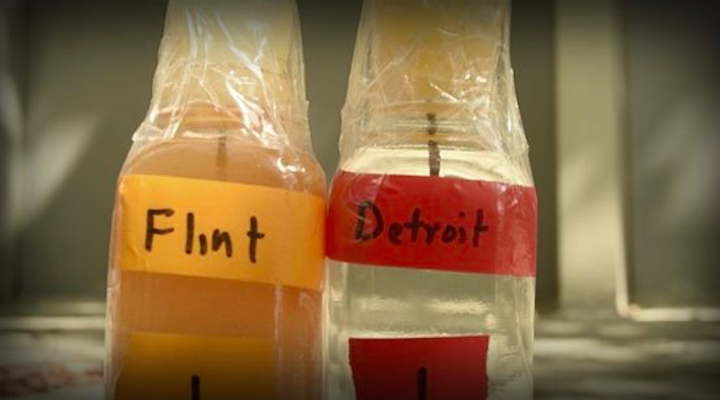Residents of Flint, Michigan, are still struggling with unacceptable levels of lead in their drinking water. Associate Professor of Inorganic Chemistry Chris Hamaker, who is studying expelling materials like lead from water using organic molecules, explains the problem isn’t the new source of water, but the new water source with the old pipes.
Hamaker:
We talk about the city of Flint changing the source of drinking water, and lead levels rose. Most drinking water is contaminated with lead not from the water source, but from the reaction of water with older pipes.
This is a real problem, especially in the Northeast and down to the Mid-Atlantic where you have really, really old houses that have lead pipes. And even with newer pipes, there can be lead solder holding them in place.
If the water flowing through those pipes is acidic enough—if the pH is low enough—it can actually react with the metal and get lead ions into the drinking water. If the water is basic (or has a neutral pH) that doesn’t happen as readily. In a lot of areas, there is not a huge problem, because you have really hard water with lots of carbonate ions. Lead carbonate is not very soluble—it doesn’t dissolve well in water. Hard water can clog the pipes, but you don’t have to worry about soluble lead in the water you drink.
The city of Flint has lead pipes that bring water from the city’s water mains into residents’ homes. When they switched their source to the Flint River, they had to treat the water differently, making the water acidic enough to react with some of the lead, producing lead ions in the water.
Initially, the city said the lead levels were okay in the Flint tap water. But they were testing water by letting it run for a short time before taking a sample, which is usually the way to test water. But when water sits stagnant in the lead pipes, lead can build up and create a plug of water that has higher lead concentrations. When a tap is turned on, that plug runs through the faucet and out, leading to lower test results for lead. But the lead danger is still there.
In theory, you could reverse that, if you switch back to a source that is less acidic or further treat the water before distribution. Eventually, there would be a protective coating on the pipes again. The time it would take for things to go back to acceptable levels would depend on how much damage has been done, how much pH is in the new water, how hard the new water is, etc.
In the end, I think it is probably going to take completely new pipes to deliver the water. And that is going to be expensive, but lead ions in water don’t go away on their own.
Hamaker can be reached via MediaRelations@IllinoisState.edu.

